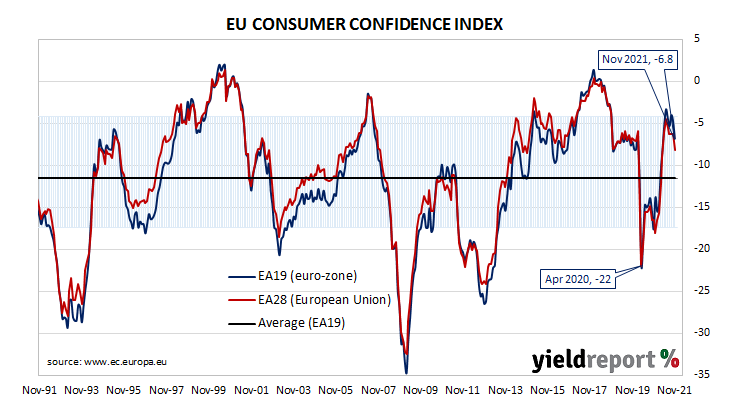Summary: Euro-zone households less optimistic in November; index falls 2.0 points to -6.8; still well above long-term average; euro-zone sovereign bond yields moderately higher; surge in COVID cases, energy costs dampen consumer spirits.
EU consumer confidence plunged during the GFC and again in 2011/12 during the European debt crisis. After bouncing back through 2013 and 2014, it fell back significantly in late 2018 but only to a level which corresponds to significant optimism among households. Following the plunge which took place in April 2020, a recovery began a month later, with household confidence returning to above-average levels in March 2021.
Consumer confidence deteriorated in November according to the latest survey conducted by the European Commission. Its Consumer Confidence Indicator recorded a reading of -6.8, below the -5.2 which had been generally expected and lower than October’s figure of -6.8. However, the current reading is still well above the long-term average of -11.6.
Sovereign bond yields increased moderately in major euro-zone bond markets on the day. By the end of it, German and French 10-year bond yields had each gained 4bps to -0.30% and +0.05% respectively.
“A surge in COVID cases and high inflation, particularly energy costs, have dampened consumer spirits,” said ANZ senior economist Felicity Emmett. She noted infection rates are higher now than were 12 months ago, albeit with a lower fatality rate.


